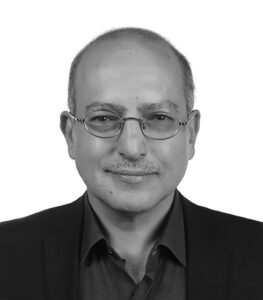The three most salient reasons for the collapse of the regime of former president Ali Abdullah Saleh and the inevitable slide into civil war were, firstly, the lack of proper representation of key political forces and social components in Yemen. After Saleh’s victory over the Socialist Party in the civil war in 1994, power was concentrated within his immediate circle, alienating other forces in the country. By the mid-2000s, even his closest ally, Ali Mohsen al-Ahmar, was alienated. This lack of representation was what led to protests in the south and a series of wars in Sa’ada against the Houthi movement.
The second factor was a lack of government effectiveness and responsiveness. The process of state-building was stifled by corrupt elites who did their utmost to preserve the status quo. Resistance to reforms and even institution building, such as adopting internal bylaws for government entities and job descriptions for public service positions, led to significant waste and the loss of opportunities. The incumbent government’s incompetence, exacerbated by conflicting directives from members of the Presidential Leadership Council (PLC), has deep roots in this inherited political system.
The third, and perhaps the most salient, reason for state failure was the near-total absence of effective oversight and accountability within the system. The formal institutional setup for accountability— parliament, the Central Organization for Control and Audit, the Public Funds Courts, along with the added layer of supervision represented by the Supreme National Anti-Corruption Committee — was effectively disabled through the concentration of power in the hands of the president and his immediate inner circle. Corruption and patronage were more practical tools for maintaining discipline and order.
To deal with these primary causes of state failure, during the early years of the current war, the notion of collective leadership was presented as a remedy to ensure proper representation, government effectiveness, and accountability. The collective leadership formula drew on Yemeni historical precedent and was guided by the 1991 Constitution of the Republic of Yemen and the 1970 Permanent Constitution of the Yemen Arab Republic, both of which stipulated collective leadership and a clear assignment of executive authority to the government — a presidential council in the Republic of Yemen, and a republican council in the Yemen Arab Republic.
Given that the war has increased the fragmentation of the country, not only along political but also identity lines, Yemeni experts have toyed with the idea of having an expansive presidential council that would represent not only the main armed groups, but also political parties and local authorities. But Yemeni political parties evolved in the capital and were domesticated by the regime, as their leaders became beholden to the bounty that comes from proximity to power. Consumed with endless negotiations over power-sharing, when the youth uprising spontaneously erupted in early 2011, they were caught off guard. By then, they were no longer trusted representatives of the Yemeni people, especially in the south and far north. A new representation was needed.
Governorate-level councils would be more in touch with local issues and better representatives of the people. One possible formula to achieve more genuine representation would be local councils in the north and the south that would then elect political representatives to a PLC. Granted, a large council would be cumbersome and unable to agree on urgent matters of state, but this is a moot point given that the executive authority, according to the 1991 constitution, is assigned to the cabinet. Rather, the role of the PLC should be agreeing on directives related to the general principles of state policy and strategies of national defense and foreign policy, and letting the government deal with the details of their implementation.
Appointment of members of the cabinet should therefore not be contaminated by zeal for political representation. Integrity and competence should be the main criteria. The cabinet would still be under the oversight of the PLC, and since the latter would have limited executive power, it would be more inclined to enforce standards of integrity and effectiveness on the former. Such a model would fulfill the three main functions that are integral to a successful political system: representation, effectiveness, and accountability.
This commentary is part of a series of publications produced by the Sana’a Center and funded by the government of the Kingdom of The Netherlands. The series explores issues within economic, political, and environmental themes, aiming to inform discussion and policymaking related to Yemen that foster sustainable peace. Views expressed within should not be construed as representing the Sana’a Center or the Dutch government.

 اقرأ المحتوى باللغة العربية
اقرأ المحتوى باللغة العربية